TVER – CITY OF RUSSIAN HISTORY
TVER – FROM ANCIENT SETTLMENT TO THE MODERN CITY
The city of Tver is called one of the oldest Russian cities. Already in the 12th century a fortress appeared at the mouth of the Tvertsa River, which was destined to become the prototype of Tver. In 1246 Tver became the capital of the Tver principality. By the end of the 13th – beginning of the 14th century, it was already a large handicraft and trade center. Especially quickly the city began to develop in the late nineteenth century: manufactories were built, new factories opened. Up to the beginning of XX century Tver became a city with developed and diversified industry. Today the city of Tver is a large administrative, industrial and cultural center of the region, the regional center of the Tver Region.
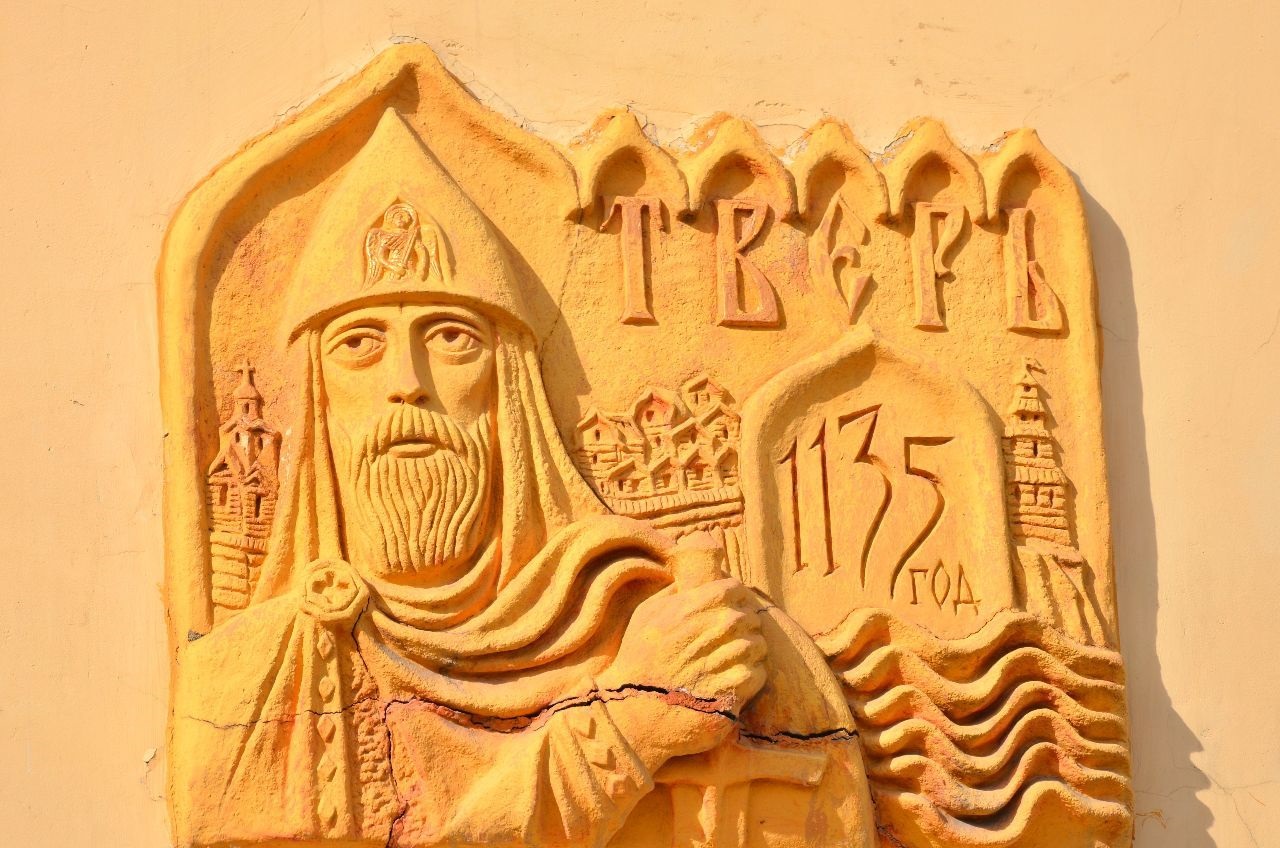
XII-XIII CENTURY: THE FORMATION OF TVER
According to archaeological data, the settlement on the Volga existed already in the IX – X centuries. In written sources Tver was first mentioned in 1127-1135 and in 1160. In the annals of Tver was firstly mentioned under the year 1208-1209. Birch bark letters, found on September 26, 1983 and August 23, 1985 on the territory of the Tver Kremlin, date back to the end of the 12th – the beginning of the 13th centuries.
In the second half of the 12th century, Tver was a small fortress on the western border of the Suzdal Principality, in the first third of the 13th century it was part of the Pereyaslav Principality.
In 1238, the city was devastated by the Mongol-Tatars, but it was quickly recovered from the rout. The annals claim that the restoration of Tver after Batu Khan devastation was led by prince Yaroslav Vsevolodovich. Around 1247, Tver was assigned to the prince Alexander Yaroslavich Nevsky, between 1252 and 1255 years passed to his brother Yaroslav Yaroslavich (ancestor of the Tver princely dynasty). In 1247, Tver became the capital of the Tver principality. The historical core of ancient Tver was the Kremlin of Tver.
The geographical position of Tver on the important trade route linking Novgorod with Northeast Russia and comparative remoteness from the Horde contributed to the influx of the population from other Russian lands to the region. The city grew rapidly. In 1265, Tver became the center of the episcopacy. The growth of the city was not prevented even by the devastating fires of 1276 and 1282, typical for wooden ancient Russian cities. The growth of the city is due primarily to the fact that political role of Tver has changed. In 1264 prince Yaroslav became the Grand Duke of Vladimir, but remained in Tver.
For the first time in Russia, after 50 years of recess, the annals and stone construction resumed in Tver under Yaroslav’s successor, Prince Michael Yaroslavich. The stone Assumption Church in the Otroch Monastery (1269) and the Transfiguration Cathedral were built. Tver districts, inhabited mainly by artisans, grew along with the Kremlin. Evidence of the increased power of Tver was the fact that in 1293 the Mongol-Tartar commander Dyuden did not dare to storm the city. In 1305 Tver had become the capital of the most powerful principality in North-Eastern Russia. Tver princes, fighting the Horde and the great reign of Vladimir, tirelessly strengthened the city.

XIV-XV CENTURY: THE DEVELOPMENT OF TVER
At the end of the 13th – the first third of the 14th centuries Tver was the largest center of the national liberation struggle of the Russian people against the Horde yoke. The antiordian policy of the princes of Tver promoted the growth of the political authority of Tver. Residents of Tver were among the first to mount an armed struggle against the Horde: in 1317 they defeated the army of the Tatar commander of Kavkady and the Moscow prince Yuri in the battle near the village of Bartenevo. In 1323 – 1325 years the stone church of Fedor was built at the mouth of the Tymaki. In 1320, Princess Anna married her eldest son Dmitry to Maria Gediminovna, the daughter of the Grand Duke of Lithuania. From that time the relations of Tver with Lithuania were established, and they did not stop until 1485.
In 1327 a powerful antiordian uprising flared up in Tver. With the help of the Moscow Prince Ivan Kalita, it was brutally suppressed, Tver was devastated. This defeat was the beginning of the decline of the political influence of Tver. In Tver, outstanding works of ancient Russian literature were created: “The Story of Mikhail Yaroslavich Tversky” by hegumen Alexander, “The word commendable to the Prince of Tver Boris Alexandrovich” by monk Thomas, “The Story of Mikhail Alexandrovich” and others. In Tver, there was an original art school: architecture, iconography, correspondence of books, jewelry and arts and crafts were developed, and in Tver its coin was minted. Tver merchants traded in Smolensk, Kiev, Vitebsk, Dorogobuzh, Vyazma, Polotsk, Vilna, etc. A high level of development reached the Tver craft, especially the processing of metals (in the XIV century locks from Tver were sold in the Czech Republic).
In the XIV century, in the context of the ongoing struggle with Moscow, the Tver princes continued to fortify the city, in 1372 a moat was dug and a rampart was piled from the Volga to the Tymaki. Large construction work was conducted in Tver in 1387, 1395, 1413 and 1446-47 (as a rule they were connected with the aggravation of the political situation and the threat from Moscow). According to the assumption of the historian V.S. Borzakovsky, in the XV century was built stone Vladimir Tower of the Tver Kremlin. Soviet historian of architecture N.N. Voronin believed that in the 15th century the Tver Kremlin had wooden walls and stone towers. But in general, the city was built up with wooden buildings and often suffered from fires: in 1318 half the city was burned, in 1405 – 100 yards, in 1413 the Kremlin, the prince’s palace and 20 churches burnt out, in 1420 – 120 yards. According to the hypothesis of E.A. Rikman, at the beginning of the XV century Tver occupied the same territory as in the XIII century. By the beginning of the XV century, news of the casting of bells in Tver, by 1408 – the casting of guns (in the middle of the XV century in Tver worked the famous cannon M. Krechetnikov).
Speaking from the end of the 13th century as an active adversary of the Horde, Tver, until the second half of the 15th century, was repeatedly hit by the Mongol-Tatars and Moscow. In this struggle, Tver gradually lost its primacy among other principalities in the North-Eastern Russia. The role of the unifier of the Russian lands was fixed for Moscow. The intense struggle undermined the forces of Tver, however, in the fourteenth and fifteenth centuries it remained a major trade, artisan and cultural center, one of the most developed Russian cities.
XV-XVII CENTURY: THE TWO BADGE OF TREASURE
In the first half of the XV century under Boris Alexandrovich Tver experienced the last rise of its power as the center of an independent principality. Extensive construction has been developed. The stone prince’s palace was built in the Kremlin, it was the second after Bogolyubsky in North-Eastern Russia, the stone cathedral belfry (1407), the stone churches of Ivan the Merciful (1420), Boris and Gleb (1438), Michael the Archangel (1455) , stone temples in Fedorovsky and Zheltikov monasteries. The economic growth of the city was accompanied by extensive economic and diplomatic activity (the trip of Athanasius Nikitin, the participation of Tver Ambassador Thomas in the Florence Cathedral).
In 1485 Moscow troops occupied Tver, prince Mikhail Borisovich fled to Lithuania. The Tver principality ceased to exist as an independent political entity and became part of the emerging Russian centralized state. In 1485 – 1490 Tver was the appanage of Ivan III’s son Ivan Ivanovich, then the city was governed by the Grand Dukes.
At the end of the XVth-XVIth centuries Tver remained a large trade and craft center, in the city there was a significant stone construction (“White Trinity”) was preserved. In December 1569, Tver was plundered by the oprichniy army of Ivan IV the Terrible, who marched on Novgorod. At the beginning of the 17th century, during the socioeconomic and political crisis in Russian state, Tver was attacked by detachments of Polish-Lithuanian interventionists. In 1606 the inhabitants of Tver repulsed the attack, but in 1609 the invaders managed to capture Tver. In the same year, prince Skopin-Shuisky, walking with an army from Novgorod to Moscow, knocked out invaders from Tver. As a result of the Polish-Lithuanian “ruin,” Tver became empty.
Considering the importance of the strategic position of the city on the way from Moscow to Novgorod, the government of Tsar Mikhail Fyodorovich appointed the commander in Tver Pozharsky-Lopat, who managed to restore the destroyed fortification in a short time. In the middle of the 17th century, Tver largely recovered from the consequences of the Polish-Lithuanian intervention. In the Kremlin was built a complex of the Archdiocese, built the stone Vladimir Tower (1674, was in front of the modern House of Officers), on the square in front of it – Gostiny Dvor with trade rows, in 1696 the city cathedral was rebuilt. Further development in Tver received a blacksmith’s trade.

XVIII CENTURY: RECOVERY OF TVER AFTER THE FIRE OF 1763
Since the beginning of the Northern War of 1700-1721, the Russian Army had been supplied through Tver. In connection with the threat of the penetration of armies deep into Russia, Peter I instructed L. Magnitsky to reinforce Tver in 1707: the dilapidated walls of the Kremlin were demolished, and wooden and earthen bastions were built in their place (about 4,500 people were employed in the work). After the foundation of St. Petersburg and the transfer of the capital of the Russian state to it, the role of Tver as a transshipment point at the intersection of the St. Petersburg tract with the Volga increased sharply (this was also facilitated by the construction of the Vyshnevolotskaya water system that connected the Volga with the Baltic Sea). In 1708, Tver became part of the newly created Ingermanland (since 1710 – St. Petersburg) province, in 1719 became the center of the Tver province as part of the St. Petersburg province (in 1727 attributed to Novgorod province.).
In 1719 – 1746 in Tver, the first and only large chemical enterprise of merchant D. Tomilin appeared in Tver – the Tver Manufactory for the production of turpentine, rosin and harpius. The merchant Svetogorov in 1760 built a leather and rope manufactory. In Tver, the transportation and servicing of ships on the waterway to St. Petersburg became widespread. In 1716, the Tsifir School was opened in Tver (the first educational institution in the city), in 1722 – a school for teaching children of the clergy, transformed into the Tver theological seminary.
In the first half of the 18th century, the appearance of the city changed little. The buildings remained mostly wooden, only churches were built of stone and some state buildings, as well as houses of the wealthiest townspeople. The fire that broke out on May 12, 1763 actually destroyed the city (852 households, almost all state buildings, the Gostiny Dvor, the shopping arcades, many churches were seriously damaged.) According to the importance of Tver as a point on the route from Saint-Petersburg to Moscow, the government of Catherine II took emergency measures to rebuild the city. In order to draw up a new development plan in Tver the architect Nikitin was sent on a mission, the project was completed in the autumn of 1763. In October 1763 restoration work began. The work was carried out by a special “architect team.” The construction was carried out mainly on the territory of the Kremlin and Zagorodsky Posad: the Travel Palace was erected, ensembles of the Octagonal Square (now Lenin Square), the embankment of Stepan Razin, the construction of the Ascension (now Soviet Street) and other central streets.
In 1773, a new fire destroyed almost the entire Zavolzhskaya part of the city, and new plans for the development of the Trans-Volga and the Zatverchye were developed and approved, in 1777 – for Zatmachye district. The construction of the 1760s – 1770s completely changed the appearance of Tver: the city received a regular planning, the streets were built with stone buildings, located “a single facade.” Construction in Tver is the first experience of restructuring a large provincial center of Russia. Under the leadership of Nikitin was created three-beam composition of the city plan (preserved as a monument of urbanism of the era of classicism).
In 1775, Tver became the center of the newly established Tver governorate (since 1796 – Tver province). In 1776 a small (2-class) school was opened in Tver, in 1777 – the main (4-class) school, 2 almshouses for the crippled and elderly and a provincial hospital for 40 beds (all these institutions were under the province order of public charity) . By the end of the XVIII century in Tver there were up to 70 small semi-handicraft enterprises (spinning, linen, leather, candle, oil – and wax, cereals and others).
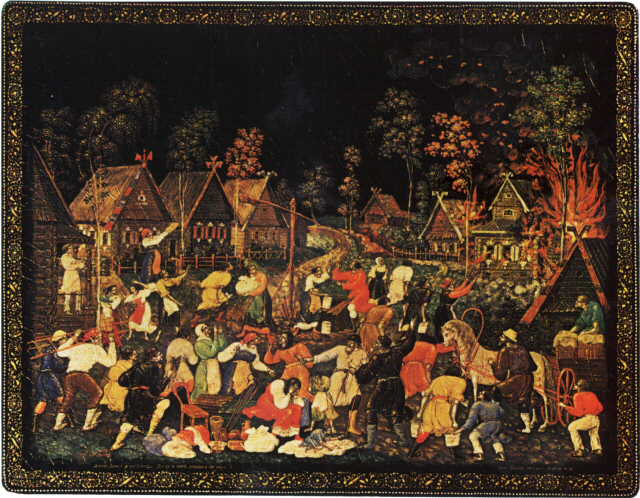
XIX CENTURY: GOLDEN ERA
In 1809-1812 Tver was the center of the newly formed Tver, Yaroslavl and Novgorod General Governorship, the residence of Governor-General Prince GF. Oldenburg became the Travel Palace. For the improvement of urban economy in 1809, the Committee for the Improvement of the City of Tver was established, where Rossi participated in 1809 – 1815. The streets and squares in the central part of the city were paved. Rossi’s buildings influenced the appearance of the city (Christ Cathedral, residential buildings: embankment Stepan Razin, 35, Novotorzhskaya street, 73, Radischev boulevard, 41/30 and others).
Since the beginning of the Patriotic War of 1812 in Tver, the Committee for Tver military power was established, and the territorial army was formed. The building of Tver in the second quarter of the XIX century was conducted under the guidance of the architect Lvov, according to his projects, a number of civil and religious buildings were built (including the Ascension Church, the house of the Noble Assembly).
In the years 1820 – 1830 A.S. Pushkin was many times in Tver (the hotel Galyani, in which the poet stayed, is preserved). In the XIX century, many writers lived in Tver: F.N. Glinka, I. Lazhechnikov, A.N. Ostrovsky, F.M. Dostoevsky, M.E. Saltykov-Shchedrin, A.I. Ertel and others. In 1839 the publication of the “Tver Provincial Gazette” was launched. In 1804 the Tver Men’s Classical Gymnasium was opened, in 1856 – the Tver Mariinsky Women’s Gymnasium, in 1864 – 1865 – the District Junker School, in 1870 – the Tver Women’s Teacher’s School, in 1875 – the Tver Real State School.
In the second half of the XIX century, the cultural life of the city was noticeably enlivened: in 1860 a public library was opened (now the Gorky Library), in 1866 it was a museum (now the Tver unified historical, architectural and literary museum). In 1871 the first congress of Zemsky doctors of Russia was held in Tver, in 1884 the Tver provincial academic archival commission was founded, one of the first in Russia. In the late 1850s – early 1860s Tver became one of the centers of the liberal movement, the leader of the Tver noble opposition was A.M. Unkovskiy (leader of the nobility of the Tver province in 1857 – 1859). In 1858, the Tver Committee was established on the organization and improvement of the life of the landlord peasants. On the committee Emperor Alexander II tried to convince the Tver nobles to be compliant in the matter of freeing the peasants. In 1862 an extraordinary congress of the nobility of the Tver province was held in Tver, which found responses throughout Russia. The Congress spoke with an extensive program of liberal reforms. The written statement of 13 representatives of the congress was regarded as “a call to criminal actions”. All thirteen were arrested and locked up in the Peter and Paul Fortress.
During the reforms of the 1860s and 1870s, the provincial assembly, the district court and the world courts were opened in Tver in 1866, in 1870 a new city council was created, headed by the mayor. The executive body of the Duma was the city government. From the middle of the 19th century, the growth of the Tver industry began. In 1851 a transport communication was opened along the Nikolayev railway connecting Tver with St. Petersburg and Moscow. In 1853, V. von Glazenap received permission to establish a steamship company “Airplane” on the Volga in the Tver. As early as the following year, the first passenger steamers “Tver”, “Rybinsk” and “Yaroslavl”, which ran between Tver and Yaroslavl, were built at the mouth of the river T’maka.
In 1853 the Moscow merchant N.I. Kaulin laid the Christmas Manufactory in Tver, the first capitalist enterprise in the city (Tver Spinning and Weaving Factory named after Vagzhanov). On may 1, 1859 Emperor Alexander II approved the charter of the Association of the Tver Manufactory of Paper Products “(the birthday of the modern” Tver Manufactory “). Soon the owners of the “Tver Manufactory” became the largest manufacturers of Russia. In 1860, the weaving factory Zalogin-Perevolotskaya manufactory began its existence, located at 2 km from Tver. In 1873, a mechanical plant was built to manufacture parts for textile machines, in the 1870s a number of sawmills, in 1879 – a large steam mill of the Konyaev brothers. On April 11, 1897, the charter of the French plant in Tver (now the Tver Carriage Factory), which in December 1898 began to produce wagons, was supremely approved. At the end of the 19th century, 17,500 people worked at Tver enterprises (including 15,000 textile workers).
In 1866, the head of the city of Tver A.F. Golovinsky at his own expense has surrounded the entire lowland part of the city with an earthen rampart, which protected residents from the annual floods. In the last quarter of the 19th and early 20th centuries, buildings of educational institutions were built in Tver, barracks for workers and houses for employees of the Morozov and Christmas manufactories, etc. In 1893 the first telephones were installed in Tver, that until 1897 were used only by the police. In 1895 the first car appeared on the streets. In 1898 a long-distance telephone exchange was built. In 1900 a bridge across the Volga was opened, built in the Herbert system (the Old bridge). In 1901 an electric tram was launched, street lighting was started with electricity. In 1905 a cinema was opened in Tver, in 1910 a plane flew to Tver for the first time, in 1916 in Tver M.A. Bonch-Bruevich produced the first domestic radiolamp.

PRE-WAR YEARS: THE COMMUNIST PAST
In 1902, the exiled revolutionaries created the Tver Committee of the RSDLP, which tried to become the head of the workers’ movement in the city. In 1904 the first political anti-war demonstration was held in Tver. On the day of the promulgation of the Manifesto on October 17, 1905, on the granting of freedom of speech, press, assembly and unions in Tver, the Black Hundreds routed the zemstvo council. During the General October Political Strike on October 20-23, 1905, elections of the Tver Soviet of Workers’ Deputies were held. On December 12-17, 1905, the political strike of the workers of the Morozov Manufactory took place.
In Tver, terrorist actions from various political parties intensified: on March 25, 1906 – Governor P.A. Sleptsov, December 9, 1916 – General A.A. Ignatiev (father of the modern lieutenant-general, author of the book “50 years in the ranks”), March 2, 1917 – Governor Bunting, March 16, 1917 – General Chekhovskikh.
On July 15, 1914 the First World War began. In the rear Tver, the Russian-Baltic Carriage Factiry was first evacuated from Riga, then the fleet (since August 1917 – the First Tver Aviation Park, existed in Tver until 1926). In December 1915, the Tver Equipment Factory, which produced military products, entered service. The Tver radio station was mounted. On August 21, 1915, 2 days before the exercise of the post of Supreme Commander, the Emperor Nicholas II came in Tver with the inspection. On March 2, 1917, Nicholas II abdicated, the power in the country passed into the hands of the Provisional Government. On the same day a demonstration took place in Tver, armed workers and soldiers arrested the director Markov, the prison in Zavolzhsky district was destroyed, the Provisional Executive Committee of public organizations was elected, which was located in the Travel Palace. The provincial Cherven-Vodali cadet was elected Provincial Commissioner. In Tver on October 28 elected Revolutionary committee composed of 7 Bolsheviks and 2 Left Socialist-Revolutionaries. Commissars with detachments of the Red Guard and soldiers occupied the railway station, telegraph, telephone and military radio station. On December 2 the Provisional Executive Committee was liquidated, the city Duma was dissolved, by decision of the Tver Committee of the RSDLP (b), the Cadet newspaper Tverskaya Mysl was closed. On December 4, 1917, the Council of Workers’, Soldiers’ and Peasants’ Deputies merged in the Palace of the Palace, Vagzhanov was elected as the chairman. On December 31, 1917 a circular was circulated for his signature on the organization of Soviet power on the ground.
In February 1918, accelerated command courses were set up in Tver, established on the basis of the Tver Cavalry School (until 1910 – the Junker School), soon the courses were converted into a cavalry school named after Trotsky, and in August 1922 – the school named after the Third International (Kalininskaya Cavalry School). Already in December 1918 the first issue of the Red commanders took place. During the Civil War in Tver, the Teachers’ Institute was renamed Pedagogical (Kalinin Pedagogical Institute), medical and agricultural technical schools were opened (1920), Proletkult established, in the autumn of 1920 the Society for the Study of the Tver Region was formed, on March 21, 1921 – The RSFSR. On April 15, 1921 the first issue of the magazine “Our economy” came in Tver. At the same time, since 1919, the mass renaming of streets, squares, embankments, organized struggle with the church and church culture, which was an integral part of Russian national culture, began. In May 1919, for the purposes of propaganda, the relics of St. Prince Michael (600 years old) and St. Arseny the Wonderworker (500 years old) were uncovered. On May 20, 1922 “Tverskaya Pravda” reported the seizure of valuables from 35 churches and four monasteries of Tver (over 205 poods of silver, over 5 pounds of gold and 434 diamonds). Monasteries and churches began to close. In June 1918, car building factories, “Ursul and KM Meshchersky”, and the Morozov Manufactory were nationalized in Tver.
During the Civil War, Tver experienced economic difficulties. On January 1, 1921, the Carriage Factory was closed, later – Perevolotskaya, Rozhdestvenskaya and Morozovskaya manufactories, etc. (they resumed work only after the Civil War, the car-building factory – in 1926). In the second half of the 1920s, shock workers and communist were widely spread at Tver enterprises. In 1929, the textile workers of Tver initiated the signing of the “Treaty of Thousands”. In 1930, a new campaign against the church separated from the state was launched in Tver. Almost all the bell towers were torn down in Tver, dozens of churches that were monuments of Russian architecture of the XVII-XVIII centuries, on the night of April 4, 1935, the Transfiguration Cathedral was blown up.
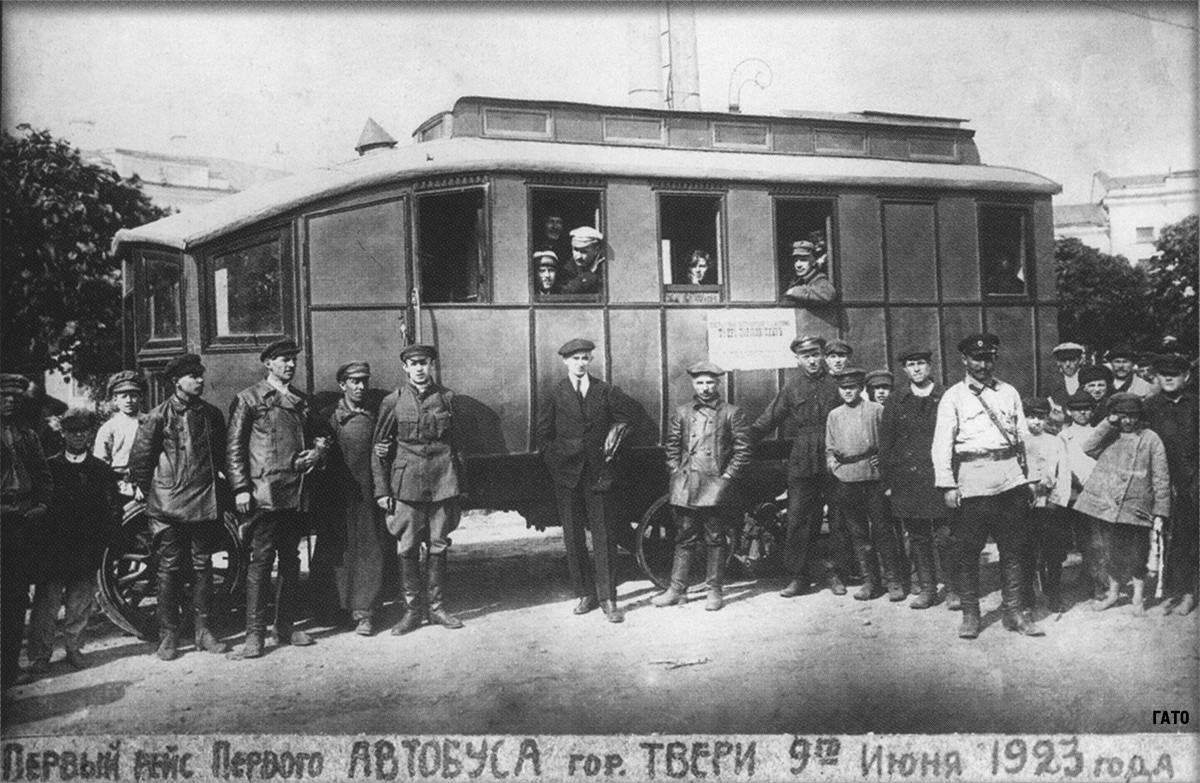
In 1929 Tver province was liquidated, and Tver became first the center of the district, and then the district as part of the Moscow region. On November 20, 1931 Tver was renamed Kalinin in honor of M.I. Kalinin, who signed a decree on the renaming. In 1935 the Kalinin region was founded with the center in Kalinin. In the new regional center there were opened: the regional philharmonic society and musical school (1936), the regional art gallery (1937). There were built a number of original buildings in the center of the city: the Academy on the embankment of St. Razin (1935), the cinema “Zvezda” (1937), the river station (1938). The construction of new avenues – Kalinin, Tchaikovsky, Vagzhanov Street – began.
THE YEARS OF THE GREAT PATRIOTIC WAR: THE TIME OF GREAT TRIALS
On June 22, 1941 began the Great Patriotic War. And already in October 1941 on the Moscow direction there was a difficult situation. In the defense of our troops on the Kalinin operational line, a gap of up to 800 kilometers was formed, in this gap the German fascist command sent the third tank group and considerable forces of the 9th Army. October 14, the enemy captured the city of Kalinin. On the same day in the evening, the calculation of Sergeant Epanchi, who managed to stop the advance of German tanks on the bridge of Tverecki, was distinguished. On October 17, Soviet T-34 tank, which went through the city through the city and went into the occupied Kaliningrad the location of Soviet troops in the area of the village Vlasyevo.
On October 17, the Kalinin Front was created. On December 5 – 6, 1941, the counteroffensive of the Red Army began near Moscow. On December 16, the city of Kalinin was completely liberated by the troops of the 31st and the 29th of the armies. From December 5 to 16, the troops of the Kalinin Front destroyed over 7,1 thousand enemy soldiers and officers, 11 tanks, 220 vehicles, 61 guns, and 55 mortars.
The victory for Kalinin went at a high price: more than 20 thousand Red Army soldiers were killed. In the city, 7714 buildings were destroyed, 510.3 thousand square meters of living space, which accounted for 56% of the housing stock. More than 70 enterprises of the city were put out of order. Until March 3, 1943, until the day of the liberation of Rzhev, the city of Kalinin was subjected to systematic raids by German aviation. On March 19, 1942 the fighter pilot Pichugin committed the ramming of a fascist aircraft in an air battle in the sky over Kalinin (posthumously awarded the title of Hero of the Soviet Union).
The city left the front-line zone and the hard time of reconstruction began, replaced by the rise of industrial construction.
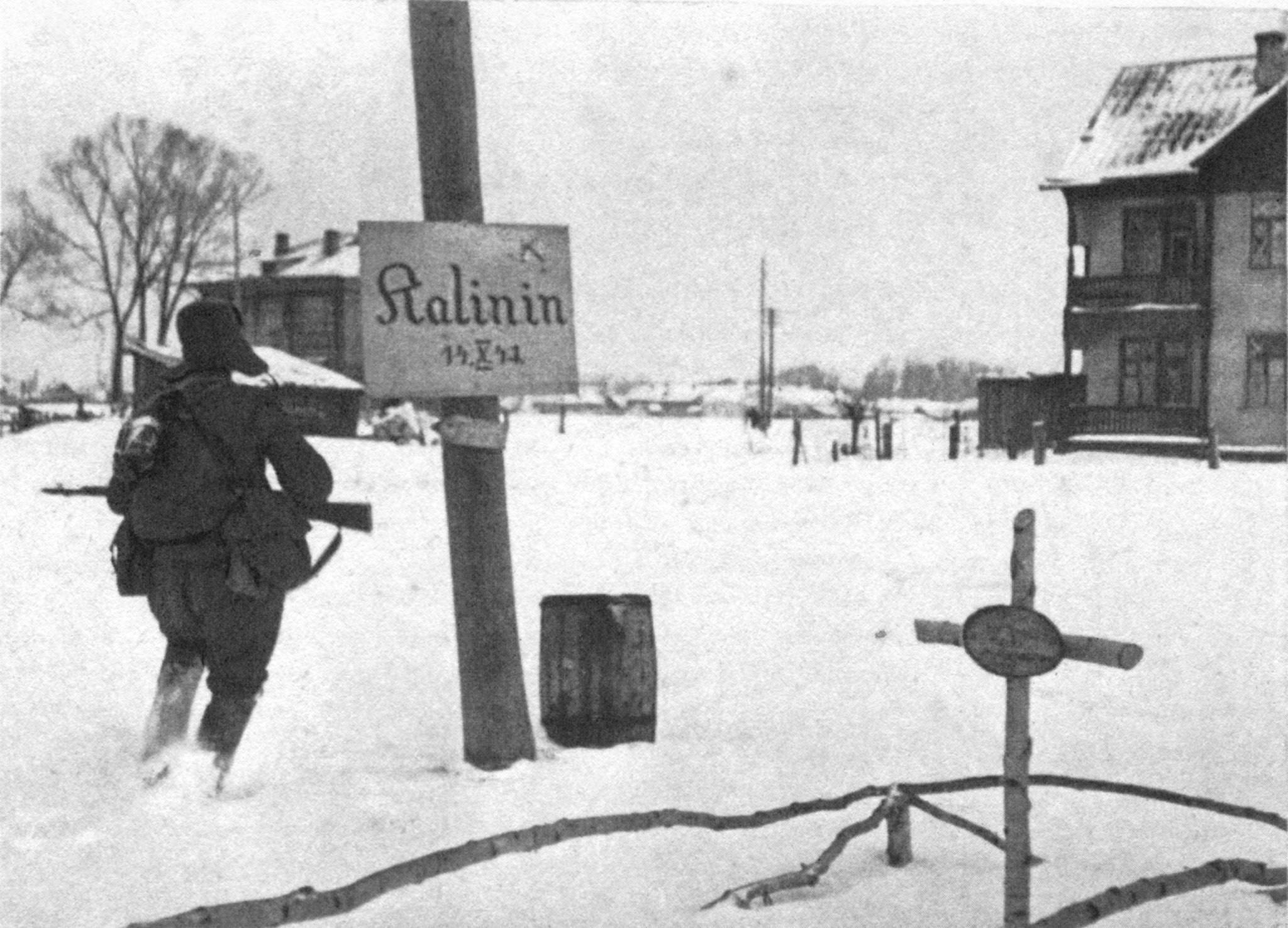
YEARS AFTER WAR: RESTORATION OF THE CITY
On November 1, 1945, the Council of People’s Commissars of the USSR adopted a resolution on measures to restore 15 cities of the RSFSR destroyed by the fascist invaders, including Kalinin. In the next 10 – 15 years, the city received a number of buildings in the style of “Soviet classicism”: the Drama Theater (1951), the Palace of Culture in Gagarin Square (1953), the Library of M. Gorky, the building of the Polytechnic Institute on Lenin Avenue (1954) and others. One of the best buildings, built in 1950, is a house on the corner of Vol’ny Novgorod and Tverskoi Avenue (with the Optics store). A similar composition technique was used in the architecture of the neighboring house, next to the cinema “Zvezda”. In 1953 a new bridge across the Volga was built in the center of the city (arch constructions of St. Petersburg’s Nikolayev Bridge across the Neva were used).
Industrial methods for the subsequent construction of houses on standard projects have given the architectural design of buildings a secondary role. At the same time, the destruction of old buildings, especially of the religious ones, continued: in 1960, the trading rows were demolished on the Peasant Square, in 1966 – the church of Philip the Apostle and the German church, in 1983 – the temple of Alexander Nevsky and others. Monuments are installed in Tver: Afanasy Nikitin (1955), I.A. Krylov (1959), AS Pushkin (1972, 1974), ME Saltykov-Shchedrin (1976), VI Lenin (1925, 1959, 1980), MI Kalinin 1955, 1956); multi-figure bronze compositions – “Friendship”, dedicated to the Festival of Youth and Students (1957) and the “Treaty of Thousands” (1982), dedicated to the events of 1929; obelisk of the Victory (1970). In 1947, the Tver electrical equipment plant was put into operation, in 1949 a CHP-4 was built. In the same year, the excavator plant mastered the production of excavators on the road, in 1950 the first production of the chemical fiber factory (Khimvolokno) and the silicate brick plant in Zatverchie (Tver Combine of Building Materials No. 2) were commissioned, in 1956 the Tver Polygraphic Combine children’s literature, in 1957, the Tver silk weaving factory was established, in 1962, the Iskozh Combine was built. In 1963, the Tver Worsted Factory was built, in 1965 – a large meat-packing plant and a pharmaceutical factory, in 1966 – the first stage of the Tver plant of fiberglass and fiberglass. By the early 1990s, there were about 80 industrial enterprises in 28 branches in Tver.
Tver is an important transport hub. In 1961, Tver port was created on the deep-water part of the Upper Volga. In 1961, a circuit motorway was opened with a bridge across the Volga, connecting the motorways to Moscow, St. Petersburg, Rzhev, Volokalamsk, and Turginovo. There is an asphalt road to Bezhetsk and Kimry from Tver. In 1962, natural gas was supplied to the Kalinin pipeline via the Stavropol-Serpukhov-Leningrad gas pipeline. In the same year, with the construction of 220-330 kV transmission lines and substations Kalinin was connected to the Unified Energy System of the European part of the USSR, in the same year between Moscow and Kalinin began to walk through electric trains.
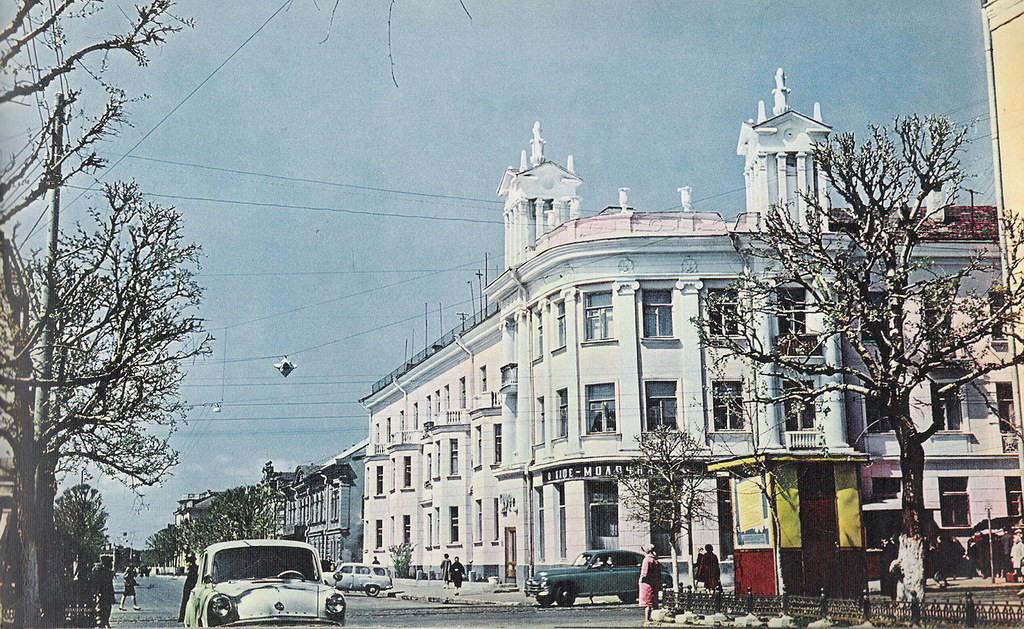
There are 5 universities in Tver: Tver State University (founded in 1971), Tver Polytechnic Institute (1958, now Tver Technical University), Tver State Medical Institute (1954, now Tver Medical Academy), Tver Agricultural Institute (1972, Tver Agricultural Academy), the Military Academy of Air Defense of G.K. Zhukov (1956); a number of scientific research institutes, including the All-Union Research Institute of Synthetic Fiber (VNIISV), the All-Union Scientific Research Institute of Geophysical Methods of Research, Testing and Control of Oil and Gas Prospecting Wells (VNIIGIK, 1982) and other 11 specialized secondary educational institutions, Suvorov Military School 1943, 14 vocational schools, 48 secondary schools.
Among the institutions of culture – the Tver Drama Theater (1921), the Theater of Children and Youth (1959), the Tver Puppet Theater (in 1944, the special building – 1975), the Regional Philharmonic (1936), Tver State Circus (1971), 12 cinemas (including Vulkan, Zvezda, Rossiya, Mir), 8 Palaces of Culture. Tver is a large museum center: in 1977, the Tver State Unified Historical, Architectural and Literary Museum was established on the basis of the regional museum of local lore, in 1970 the Museum of Tver life was opened, in 1975 the museum of Saltykov-Shchedrin, in 1969 – Museum of Health History of Tver Province – Tver Region. The Tver Regional Art Gallery in 1987 received an additional exhibition hall.
In 1955 the Kalininsky retransmission television center was put into operation, and from March 14, 1989 regular broadcasts of Tver television began. In Tver newspapers are published: “Tver life” (until July 24, 1990 – Kalininskaya Pravda), Tverskiye Vedomosti (since September 1, 1990), the city newspaper Veche Tver (since October 3, 1990), etc. In Tver there are regional creative organizations: the Union of Writers of the Russian Federation, the Union of Artists of the Russian Federation, the Union of Architects of the Russian Federation, the Union of Journalists of the Russian Federation, the Union of Theater Figures of the Russian Federation.
In 1987, the public of Kalinin advocated the return of the city to its historical name. The initiative group “Return” was created. On November 14, 1989, the joint session of city and district Soviets of People’s Deputies, Kalinin, decided to return the city to the historic name Tver. July 27, 1990 Kalinin regional Council of People’s Deputies adopted a decision “On the restoration of the name of the city of Tver and the renaming of the Kalinin region in Tver region”. On July 17, 1990 Chairman of the Supreme Soviet of the RSFSR Yeltsin signed two decrees of the Presidium of the Supreme Soviet of the RSFSR – “On the renaming of the city of Kalinin in the city of Tver” and “On renaming the Kalinin region in the Tver region.” On July 29, 1990 in Tver held a solemn Veche – a holiday dedicated to the return of the city to its original name. November 16, 1990 officially restored the coat of arms of Tver, approved in 1780 by Empress Catherine II.
